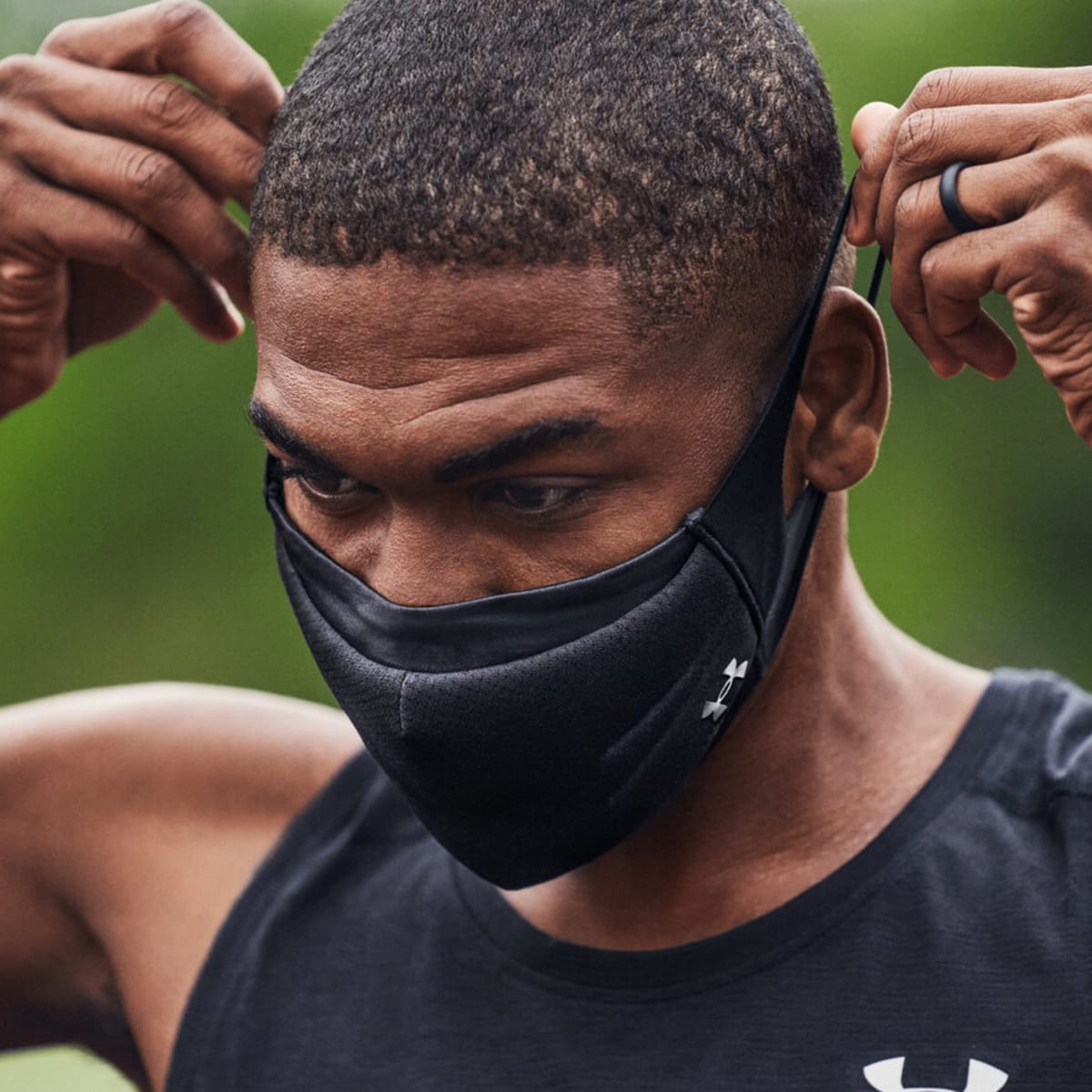Masks and other face coverings have become a fact of life for most Americans. As stay-at-home orders are lifted, wearing masks continues to be an important part of protecting against the further spread of COVID-19 — and part of wearing a mask is washing a mask. Brian Sansoni, a senior vice president for communications at the American Cleaning Institute, says that according to the Centers for Disease Control and Prevention, “reusable cloth face masks and coverings should routinely be washed depending on how often they’re worn.”
Carolyn Forte, the director of the Good Housekeeping Institute’s Home Appliances and Cleaning Products Lab, says that fabric face coverings are the only ones that can be laundered. “If you made it yourself and there’s a paper filter, like a coffee filter, inside, that needs to be removed before washing,” she adds.
How to machine wash face masks
According to Forte, the best way to wash a fabric mask is also the easiest: Masks can be laundered in the washing machine. She advises that you wash masks in warm or, preferably, hot water (the hotter temperature helps sanitize) and suggests using a heavy-duty stain-removing detergent, like Tide, Gains, or any other common detergent.
Tide Ultra Stain Release ($16.40; amazon.com)
Gain Flings Liquid Laundry Detergent Pacs ($9.94, originally $12.84; amazon.com)
Forte says that for optimal cleaning and disinfecting, you should be sure the washer and dryer at its hottest heat setting are not overloaded so that the mask can tumble freely in each machine. She says laundry sanitizer products aren’t necessary, and Sansoni echoes that, saying, “You really don’t need any specialty products. You can just toss in the mask with the rest of your laundry.”
How to wash masks by hand
Forte says that if hand-sewn masks are especially delicate, or have washable filters inside, they should be washed by hand. “Do so in warm or hot water and scrub, agitating it for at least 20 to 30 seconds,” she says. “Rinse thoroughly and if not safe for tumble drying, air dry it.”
Deeper hand-laundering can be done by diluting liquid or powder detergent in hot water, submerging the mask in the solution, and agitating it for 30 to 60 seconds to lift dirt and body soils before allowing it to soak for 20 minutes. Then, rinse thoroughly and allow to dry. When hand-washing masks, be careful not to overuse detergent, and to rinse very well, so there’s no detergent residue that could cause skin irritation.
And remember, treat the mask-like an infected surface after using it, and be sure to wash your hands after handling it every single time.
Stain removal
If a cloth mask has become stained during wear, handling, or storage, it can be treated with the same laundry stain pretreatment products used for clothing and other textiles.
Not all stain treatment products work equally well on all stains, so if you frequently need to remove a specific stain type, it’s worth investing in the best product for the job. These common strains are best treated using the following products.
Dirt and grime
Dirt and grime, including body soils like dead skin and oil, are protein stains and should be treated using an enzymatic stain remover.
Zout Laundry Stain Remover Spray, Triple Enzyme Formula ($7; amazon.com)
Food
Based on our own experiences, no one formula will treat the wide variety of food stains out there, but Shout spray is one of the most effective treatments for most food stains.
Shout Triple-Acting Laundry Stain Remover ($15.47; amazon.com)
Makeup, including lipstick
Makeup — like foundation, concealer, bronzer, or lipstick — can be removed from fabrics using rubbing alcohol. Makeup remover wipes are also a good way to pretreat makeup stains on masks and face coverings.
Neutrogena Makeup Remover Cleansing Towelettes ($8.97, originally $11.96; amazon.com)
Sunscreen
Many sunscreen formulas contain an ingredient called avobenzone that does not react well to chlorine or oxygen bleaches, so avoid using them when washing fabrics that have gotten sunscreen on them. Avobenzone can also have a reaction to the iron in our water supplies that causes what are, essentially, rust stains; those can be treated with a rust stain remover.
Whink Rust Stain Remover ($9.97; amazon.com)
Sweat
Sweat is a protein stain and is best treated using an enzymatic stain remover.
Krud Kutter Sports Stain Remover ($9.15; amazon.com)
Drying and alternate cleaning methods
According to Sansoni, a key step for cleaning masks is the high heat of the dryer, “so don’t skip it,” he says. However, be aware that masks made from cotton or linen can shrink when exposed to high heat, so choose the hottest setting that is safe for the mask’s fabric type.
If a mask becomes wrinkled or creased from washing, Forte says that “after drying, you can iron the mask on high heat cotton or linen setting for extra measure, provided it’s safe for the mask’s fabric.”
Rowenta Eco-Intelligence Energy Saving Steam Iron ($109.95, originally $119; amazon.com)
Steaming, too, can de-wrinkle a mask, but Forte warns against relying on steam to clean and disinfect. “Steam does kill bacteria and viruses and can sanitize hard surfaces, but you have to be sure that the steam penetrates all areas of the mask and its folds and for the proper length of time required for a thorough cleaning,” she says. “I haven’t seen evidence yet that household steamers would be an effective way to thoroughly clean cloth face masks and wouldn’t recommend it at this time.”
Sansoni also cautions against using other inventive methods of cleaning masks. “We’ve read about people microwaving, boiling, or putting masks in the oven — none of these methods are safe or effective, as they may degrade the mask fabric and pose a fire hazard,” he says. “Laundering the masks is the way to go.”
Note: The prices above reflect the retailer’s listed prices at the time of publication.


